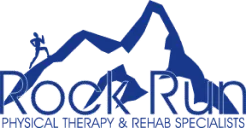Physical Therapy for Hypermobility In Layton

What is Hypermobility
Joint hypermobility is a condition that goes beyond the typical flexibility enjoyed by dancers or gymnasts. It’s a pervasive condition affecting the body’s connective tissues – particularly the synovial joints, which include the shoulders, knees, and fingers. These joints have a larger range of motion due to the laxity in the ligaments and cartilage that normally limit their movement. This is why you might hear people with this condition referred to as being “double-jointed”.
In young children, a certain degree of hypermobility is fairly common and not a cause for concern. The soft and flexible connective tissues allow for more stretchiness and ease of movement, but most children grow out of this flexibility as they age. When this doesn’t occur, and the flexibility persists or even increases, it can lead to a syndrome known as a hypermobility spectrum disorder (HSD). This is a more severe and debilitating condition, which includes joint hypermobility among its many symptoms.
Symptoms of hypermobility spectrum disorder can be wide-ranging and impact various areas of a person’s life. The most obvious manifestation is in the joints themselves. Excessive flexibility can lead to a greater risk of dislocations and sprains, as the joints can easily move beyond their normal limits. Over time, this can result in chronic joint pain, stiffness, and a general feeling of the joints being “loose”.
However, HSD affects more than just the joints. Because connective tissue is found throughout the body, other systems can also be affected. For example, individuals with HSD may experience digestive problems due to laxity in the connective tissues that support the gut. Cardiovascular issues can also occur, including dizziness, fainting, and rapid heart rate, due to the effect on blood vessels.
How Can Physical Therapy Help With Hypermobility?
One of the main treatments for managing the symptoms of hypermobility spectrum disorder is physical therapy. This involves exercises designed to strengthen the muscles surrounding the joints, thus providing more support and helping to prevent dislocations and injuries. Furthermore, physical therapy can also help to manage chronic pain and improve overall physical functioning.
Rock Run Physical Therapy in Utah is a clinic that specializes in providing this type of treatment for individuals with HSD. The clinic has a team of expert physical therapists who have experience in working with hypermobile individuals. These professionals understand the unique challenges faced by individuals with HSD and can tailor a treatment plan to each individual’s specific needs.
In addition to strengthening exercises, Rock Run’s treatment program also includes joint protection techniques, pain management strategies, and education on the condition itself. By empowering their patients with the knowledge and practical skills, Rock Run helps them to manage their symptoms more effectively and lead more active, fulfilling lives.
If you or someone you know is struggling with joint hypermobility, it’s important to seek professional help. Early intervention can help to manage the symptoms of HSD and prevent further injuries. And remember, it’s not just about managing the physical symptoms – having HSD can also take a toll on mental health. Therefore, comprehensive treatment should also include psychological support and coping strategies.
Joint hypermobility can be a challenge, but with the right support and treatment, individuals with this condition can lead fulfilling and active lives. Rock Run Physical Therapy is one of the clinics providing this crucial support, giving hope and improved quality of life to individuals with a hypermobility spectrum disorder.
With increased awareness and understanding of hypermobility spectrum disorder, the medical community and specialized physical therapy clinics like Rock Run are developing more targeted and comprehensive treatment strategies.
For those diagnosed with HSD, it is crucial to maintain regular contact with a healthcare provider to manage and monitor their condition effectively. This contact will also ensure that any emerging problems associated with the disorder are identified and addressed promptly. While there’s currently no cure for HSD, the symptoms can be managed and mitigated to a large extent with the right approach.
Physical therapy, specifically, plays a critical role in managing HSD. It’s not simply a matter of engaging in regular exercise, but rather carrying out specially designed programs that consider the individual’s unique circumstances, strengths, and weaknesses. Rock Run’s team of physical therapists utilizes an array of methods to achieve this, from resistance training and proprioceptive exercises to improve muscle strength and joint stability, to mobility and stretching exercises that can help manage pain and improve function.
Education also forms a significant part of the treatment process. Rock Run believes in empowering patients by helping them understand their condition and how to manage it. This includes teaching about joint protection techniques to avoid dislocation and injuries, understanding how to monitor their bodies for signs of overexertion, and learning about the importance of pacing and balance in their daily lives.
As more is understood about hypermobility spectrum disorder, the hope is that even better treatments and interventions will be discovered. For now, the combination of physical therapy, education, and regular healthcare monitoring are the best approaches to manage HSD and allow those affected to lead healthy, productive lives.
Call us today!
In conclusion, while hypermobility may pose unique challenges, these can be navigated successfully with the right support and resources. Clinics like Rock Run Physical Therapy are at the forefront of this mission, striving every day to help improve the lives of individuals with hypermobility spectrum disorder.


